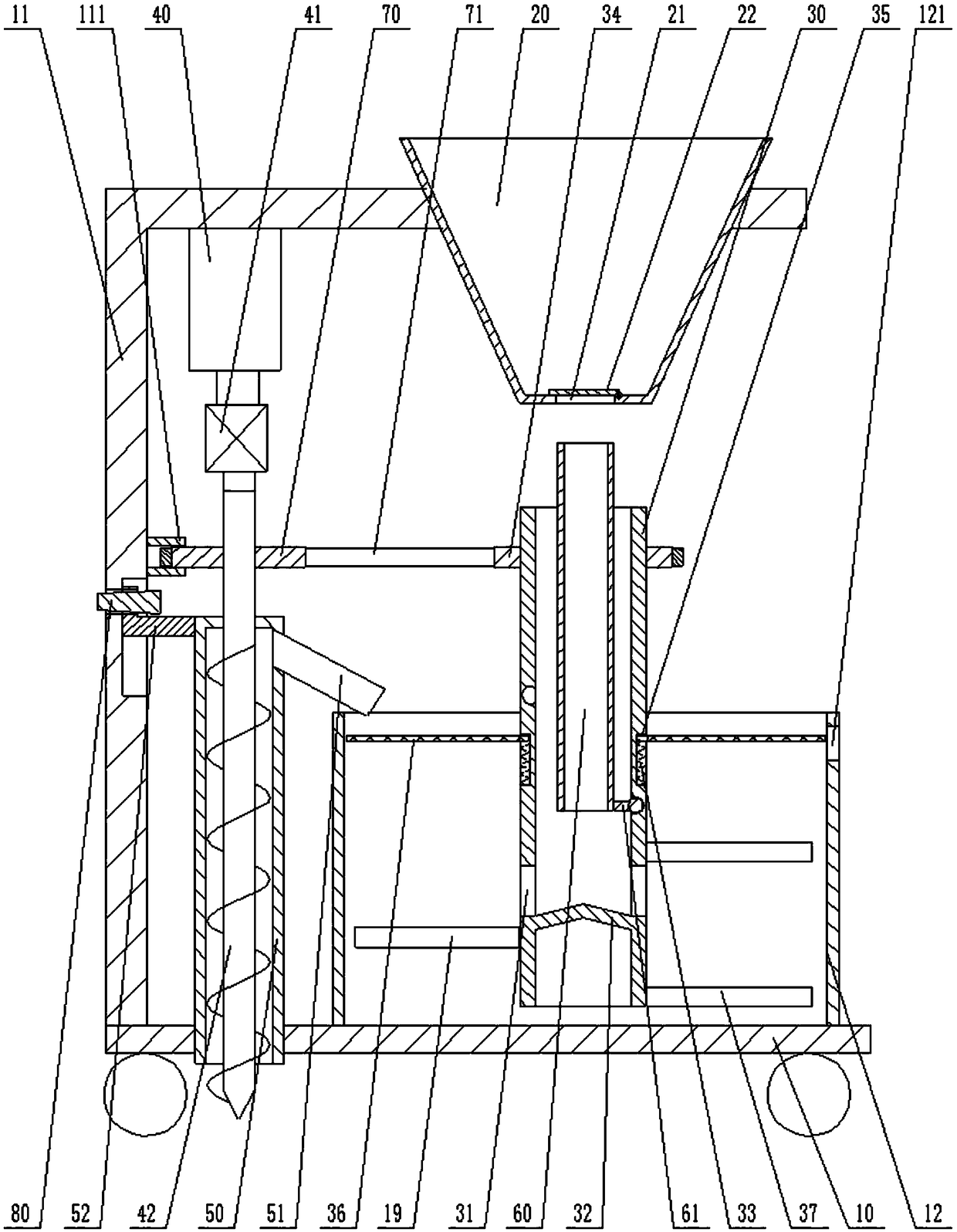Cultivating method of roses
A cultivation method and technology for roses, applied in the directions of flower cultivation, botanical equipment and methods, culture medium, etc., can solve the problems of low yield, backward technology, affecting the economic benefits of roses, etc., and achieve increased yield, shortened budding time, and shortened budding effect of time
- Summary
- Abstract
- Description
- Claims
- Application Information
AI Technical Summary
Problems solved by technology
Method used
Image
Examples
Embodiment 1
[0025] This embodiment discloses a method for cultivating roses, comprising the following steps:
[0026] (1) Seed selection: select plump rose seeds and soak them in a 15% sodium hypochlorite solution for 6 hours.
[0027] (2) Germination treatment: put the seeds treated in step (1) into plastic bags equipped with culture soil, control the temperature at 24°C during the day, and control the temperature at 14°C at night; after 28 days, keep the temperature constant at 22°C. °C until the seeds germinate. The culture soil is prepared by the following steps: a. Prepare the following raw materials in parts by mass: 100 parts of sandy soil, 20 parts of water, 0.008 parts of gibberellin, and 0.0005 parts of tryptophan; b. mix water, tryptophan and gibberellin Mix to obtain a treatment solution, and then mix the treatment solution with sand to obtain culture soil.
[0028] (3) Cultivate seedlings: Cultivate germinated rose seeds to make rose seeds grow into rose seedlings; during t...
Embodiment 2
[0038] This embodiment discloses a method for cultivating roses, comprising the following steps:
[0039] (1) Seed selection: select plump rose seeds and soak them in 18% sodium hypochlorite solution for 7 hours.
[0040] (2) Pregermination treatment: put the seeds treated in step (1) into plastic bags equipped with culture soil, control the temperature at 25°C during the day, and control the temperature at 15°C at night; after 30 days, keep the temperature at 22°C. °C until the seeds germinate. The culture soil is prepared by the following steps: a. Prepare the following raw materials in parts by mass: 100 parts of sandy soil, 23 parts of water, 0.01 part of gibberellin, and 0.008 part of tryptophan; b. mix water, tryptophan and gibberellin Mix to obtain a treatment solution, and then mix the treatment solution with sand to obtain culture soil.
[0041] (3) Cultivate seedlings: Cultivate germinated rose seeds to make rose seeds grow into rose seedlings; during the cultivati...
Embodiment 3
[0046] This embodiment discloses a method for cultivating roses, comprising the following steps:
[0047] (1) Seed selection: select plump rose seeds and soak them in 20% sodium hypochlorite solution for 8 hours.
[0048] (2) Acceleration treatment: put the seeds treated in step (1) into plastic bags equipped with culture soil, control the temperature at 25°C during the day, and control the temperature at 16°C at night; after 32 days, keep the temperature constant at 24°C. °C until the seeds germinate. The culture soil is prepared by the following steps: a. Prepare the following raw materials in parts by mass: 100 parts of sandy soil, 25 parts of water, 0.002 parts of gibberellin, and 0.01 part of tryptophan; b. mix water, tryptophan and gibberellin Mix to obtain a treatment solution, and then mix the treatment solution with sand to obtain culture soil.
[0049] (3) Cultivate seedlings: Cultivate germinated rose seeds to make rose seeds grow into rose seedlings; in the culti...
PUM
 Login to View More
Login to View More Abstract
Description
Claims
Application Information
 Login to View More
Login to View More - R&D
- Intellectual Property
- Life Sciences
- Materials
- Tech Scout
- Unparalleled Data Quality
- Higher Quality Content
- 60% Fewer Hallucinations
Browse by: Latest US Patents, China's latest patents, Technical Efficacy Thesaurus, Application Domain, Technology Topic, Popular Technical Reports.
© 2025 PatSnap. All rights reserved.Legal|Privacy policy|Modern Slavery Act Transparency Statement|Sitemap|About US| Contact US: help@patsnap.com

